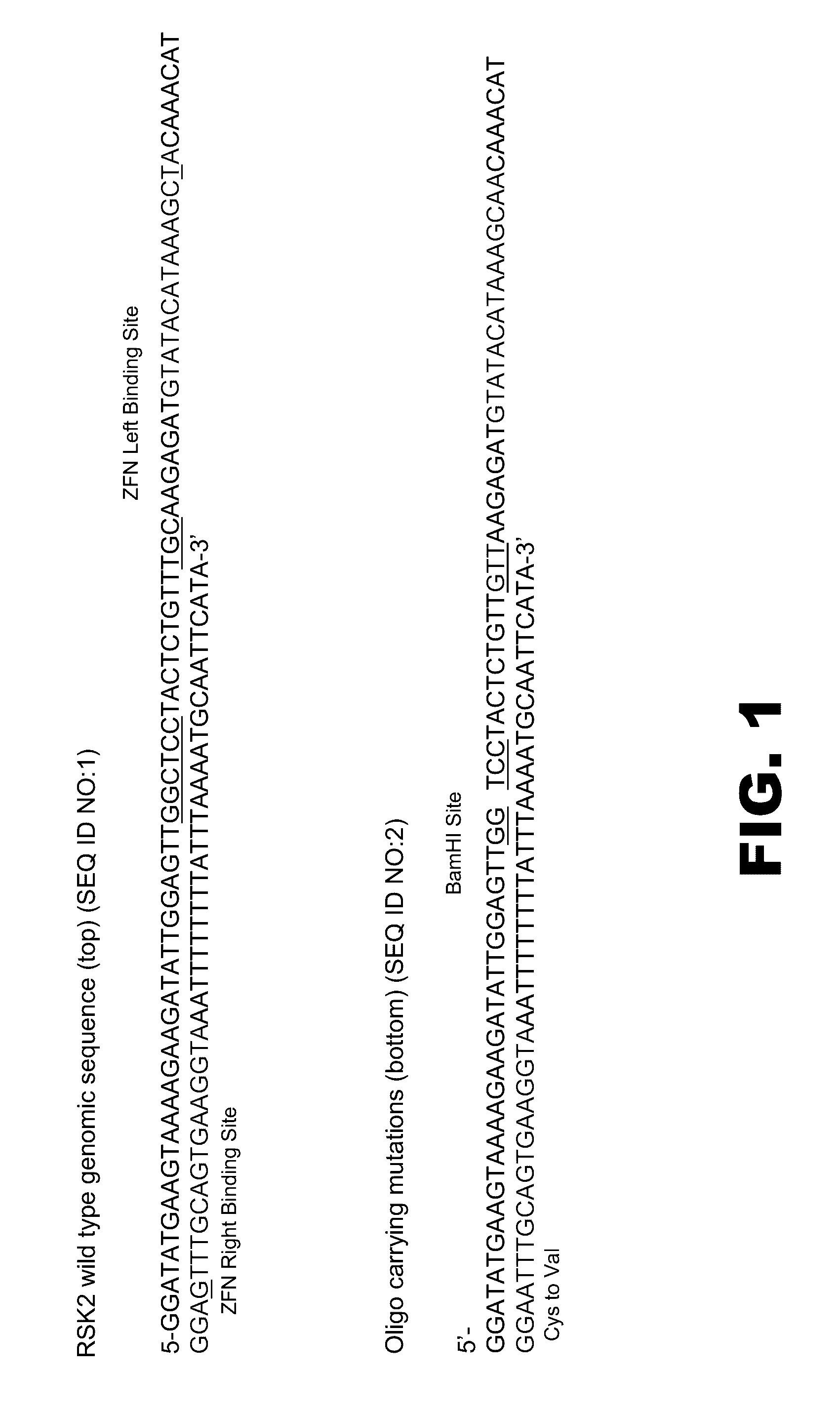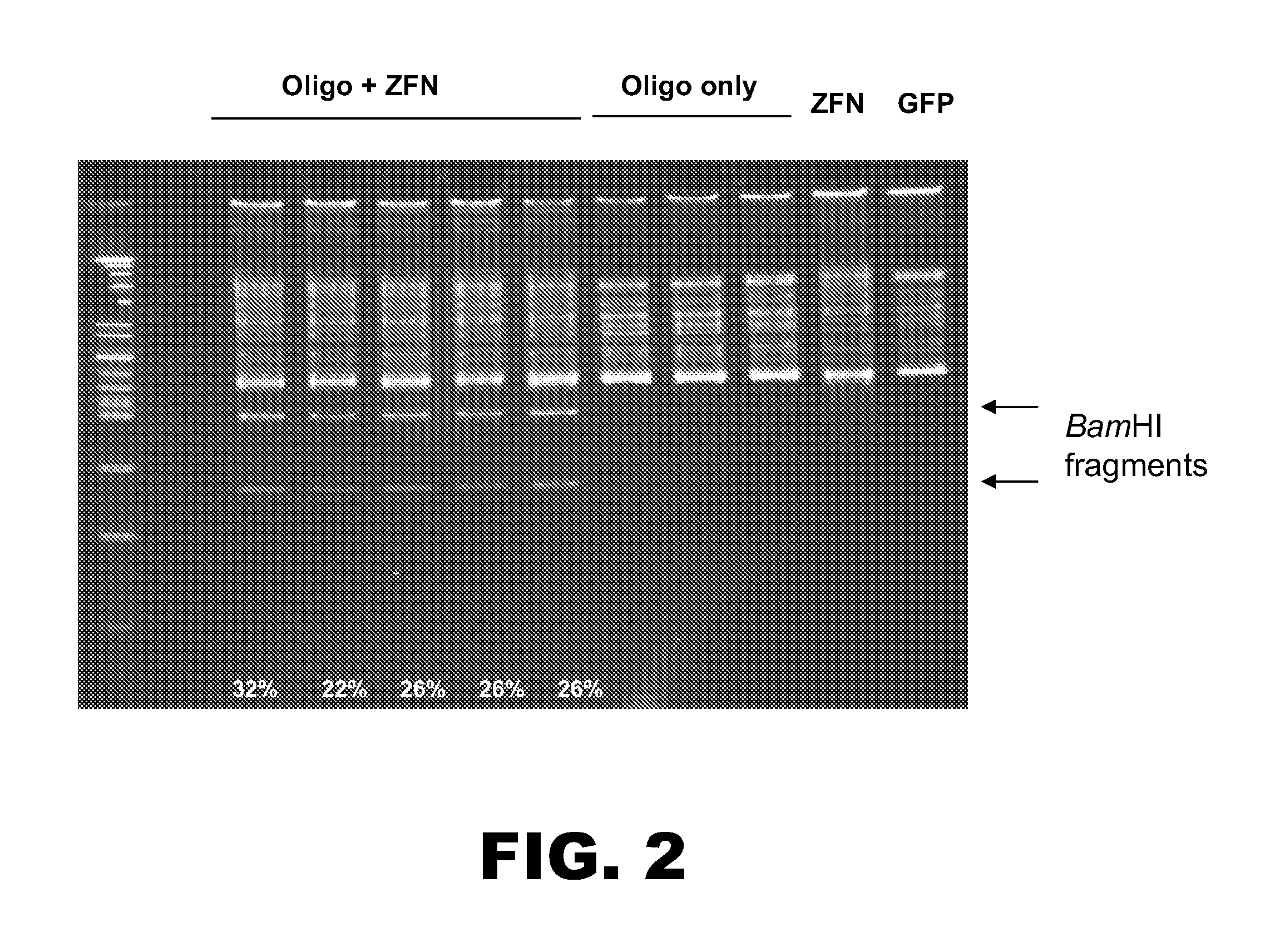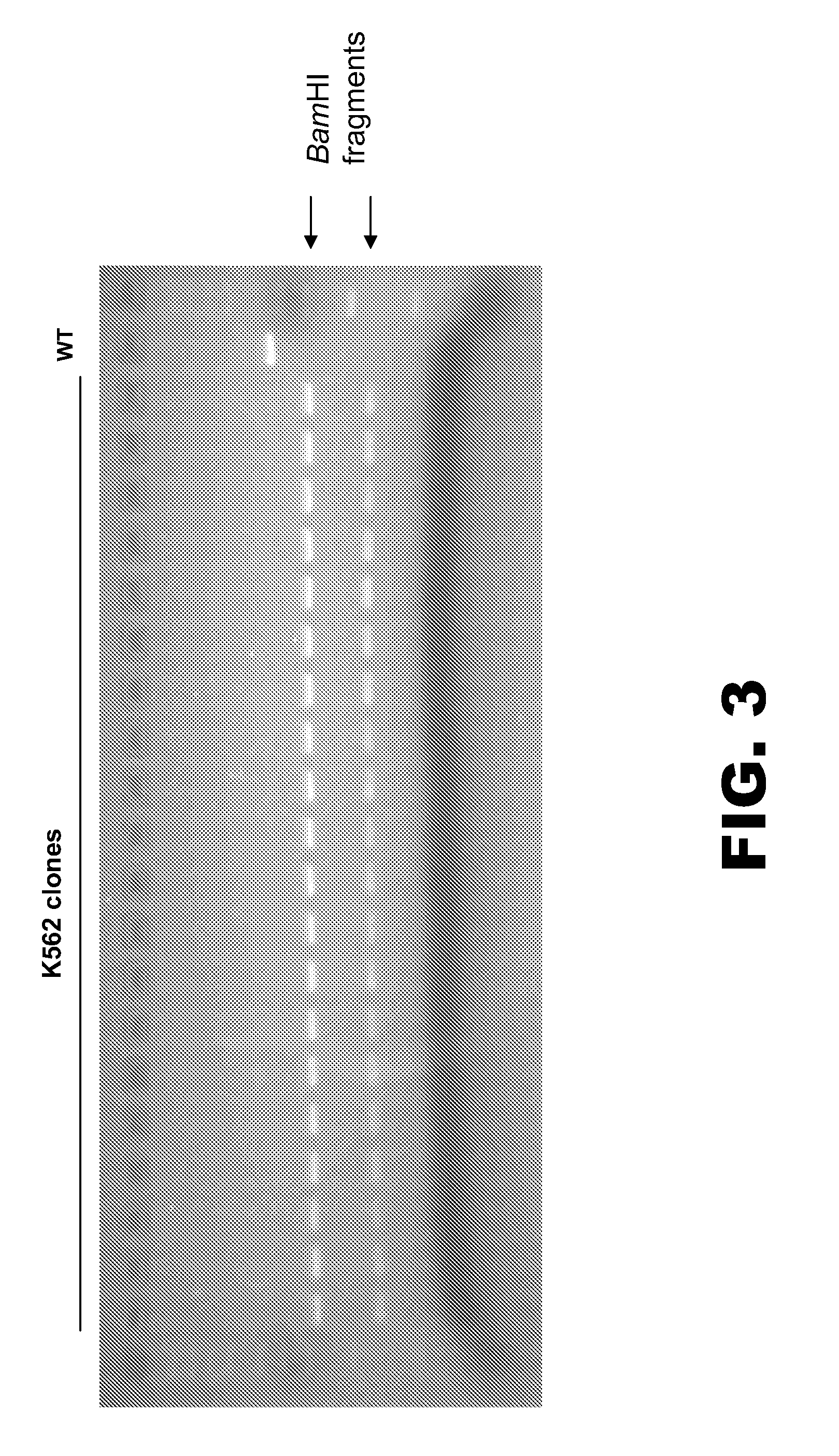Genome editing using targeting endonucleases and single-stranded nucleic acids
a technology of endonucleases and nucleic acids, applied in the field of targeting endonucleases and single-stranded nucleic acids, can solve the problems of affecting the progress of this field, low rate of spontaneous recombination in many cases,
- Summary
- Abstract
- Description
- Claims
- Application Information
AI Technical Summary
Benefits of technology
Problems solved by technology
Method used
Image
Examples
example 1
Modification of RSK2 Kinase
[0107]The following example details modification of the RSK2 kinase locus. An oligonucleotide (125 nt) was designed to incorporate three distinct mutations into the RSK2 kinase chromosomal sequence. The oligonucleotide comprised: (1) two point mutations in the ZFN binding sites to prevent subsequent non-homologous end-joining (NHEJ), (2) a TGC to GTT change to convert a Cys to a Val, and (3) a silent C to A change to create a unique BamHI site for clone screening (FIG. 1). The oligonucleotide was made using standard synthesis procedures (e.g. no chemical modifications) and was PAGE purified. A pair of zinc finger nucleases (ZFNs) was designed to target the RSK2 kinase locus. One ZFN was designed to bind the sequence 5′-GTATACATAAAGCTA-3′ (SEQ ID NO:6; left binding site indicated in FIG. 1), and the other ZFN was designed to bind the sequence 5′-GGAGTTTGCAGTGAAGGTA-3′ (SEQ ID NO:7; right binding site indicated in FIG. 1).
[0108]Human K562 cells were nucleofe...
example 2
Modification of AAVS1 Locus
[0110]The following example details the use of oligonucleotides to introduce a HindIII site into the AAVS1 locus. FIG. 4 presents the wild-type sequence of the AAVS1 locus, and sequences of sense and anti-sense oligonucleotides (108 nt) comprising the HindIII site. The oligonucleotides were made using standard procedures (e.g. with no chemical modifications) and were PAGE purified.
[0111]A pair of ZFNs was designed to target the AAVS1 locus. One ZFN was designed to bind the sequence 5′-ACCCCACAGTGG-3′ (SEQ ID NO:8; left binding site indicated in FIG. 4), and the other ZFN was designed to bind the sequence 5′-TAGGGACAGGAT-3′ (SEQ ID NO:9; right binding site indicated in FIG. 4). Capped, polyadenylated mRNA encoding the ZFNs was prepared using standard procedures. The ZFN mRNA and the oligonucleotide comprising the HindIII site were nucleofected into K562, HCT116, U205, A549, HEK293, HepG2, or MSF7 cells. After a period of incubation, pools of cells were anal...
example 3
Modification of AAVS1 Locus—Length of Oligonucleotide
[0113]To determine the whether shorter oligonucleotides could be used to deliver the HindIII site to the AAVS1 locus, oligonucleotides ranging in length from 36 to 106 nt were prepared. For example, a 106 nt oligonucleotide had sequence identity to 50 nt on either side of the ZFN cleavage site (i.e., had homology arms of 50 nt), with a HindIII site (6 nt) between the homology arms. The sequences of the oligonucleotides are presented in the Table 1 below.
[0114]
TABLE 1SEQOligoDNA sequenceID NO106aggctctggttctgggtacttttatctgtcccctccaccccacagtggggcAAGCTT10cactagggacaggattggtgacagaaaagccccatccttaggcctcctcc86sctgggtacttttatctgtcccctccaccccacagtggggcAAGCTTcactagggac11aggattggtgacagaaaagccccatcctta66sttatctgtcccctccaccccacagtggggcAAGCTTcactagggacaggattggtg12acagaaaagc56stgtcccctccaccccacagtggggcAAGCTTcactagggacaggattggtgacaga1346scctccaccccacagtggggcAAGCTTcactagggacaggattggtg1436saccccacagtggggcAAGCTTcactagggacaggat15106asGGAGGAGGCCTAAGGA...
PUM
| Property | Measurement | Unit |
|---|---|---|
| length | aaaaa | aaaaa |
| speed | aaaaa | aaaaa |
| color | aaaaa | aaaaa |
Abstract
Description
Claims
Application Information
 Login to View More
Login to View More - R&D
- Intellectual Property
- Life Sciences
- Materials
- Tech Scout
- Unparalleled Data Quality
- Higher Quality Content
- 60% Fewer Hallucinations
Browse by: Latest US Patents, China's latest patents, Technical Efficacy Thesaurus, Application Domain, Technology Topic, Popular Technical Reports.
© 2025 PatSnap. All rights reserved.Legal|Privacy policy|Modern Slavery Act Transparency Statement|Sitemap|About US| Contact US: help@patsnap.com



